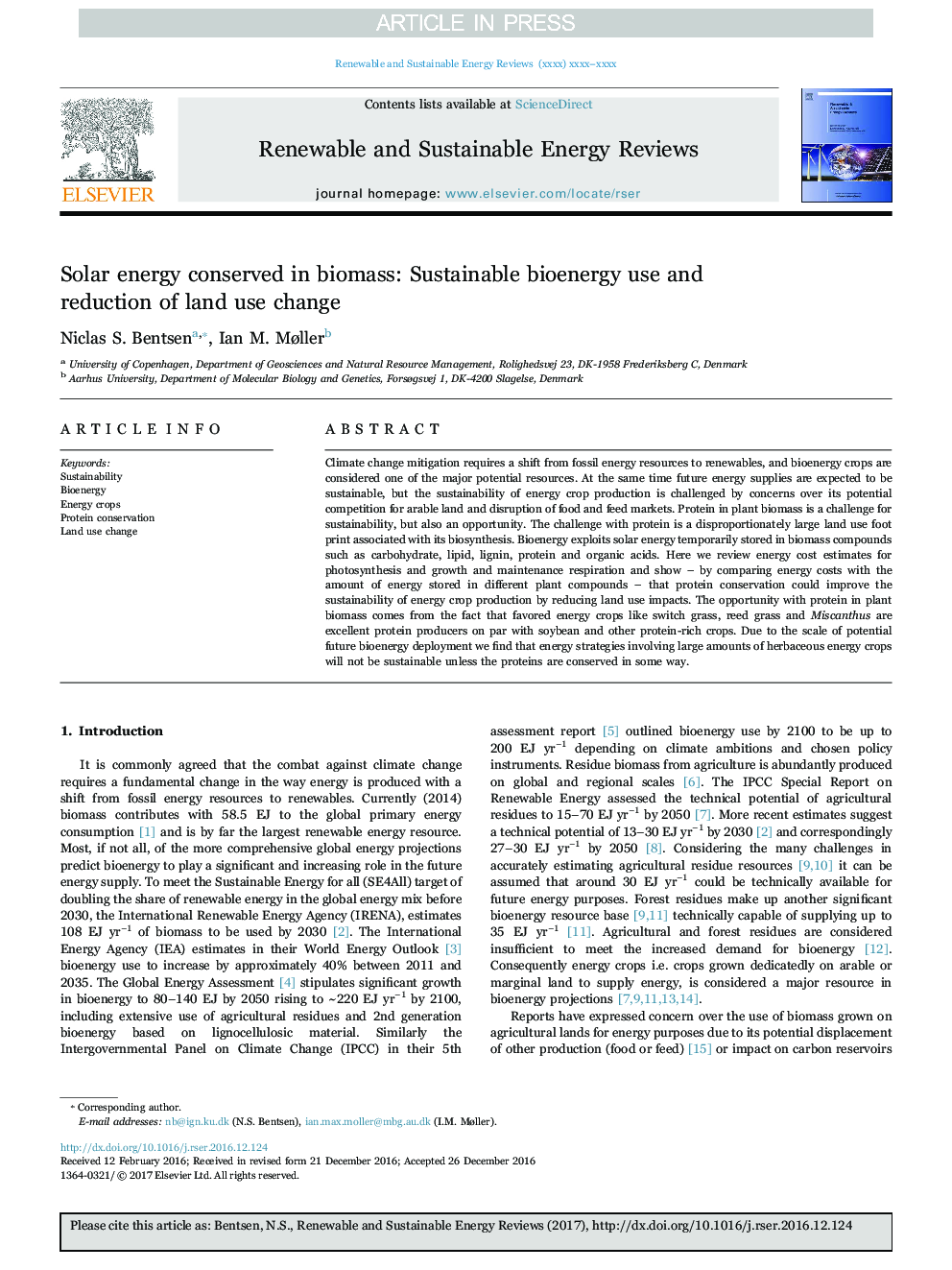| Article ID | Journal | Published Year | Pages | File Type |
|---|---|---|---|---|
| 5483095 | Renewable and Sustainable Energy Reviews | 2017 | 5 Pages |
Abstract
Climate change mitigation requires a shift from fossil energy resources to renewables, and bioenergy crops are considered one of the major potential resources. At the same time future energy supplies are expected to be sustainable, but the sustainability of energy crop production is challenged by concerns over its potential competition for arable land and disruption of food and feed markets. Protein in plant biomass is a challenge for sustainability, but also an opportunity. The challenge with protein is a disproportionately large land use foot print associated with its biosynthesis. Bioenergy exploits solar energy temporarily stored in biomass compounds such as carbohydrate, lipid, lignin, protein and organic acids. Here we review energy cost estimates for photosynthesis and growth and maintenance respiration and show - by comparing energy costs with the amount of energy stored in different plant compounds - that protein conservation could improve the sustainability of energy crop production by reducing land use impacts. The opportunity with protein in plant biomass comes from the fact that favored energy crops like switch grass, reed grass and Miscanthus are excellent protein producers on par with soybean and other protein-rich crops. Due to the scale of potential future bioenergy deployment we find that energy strategies involving large amounts of herbaceous energy crops will not be sustainable unless the proteins are conserved in some way.
Related Topics
Physical Sciences and Engineering
Energy
Renewable Energy, Sustainability and the Environment
Authors
Niclas S. Bentsen, Ian M. Møller,
